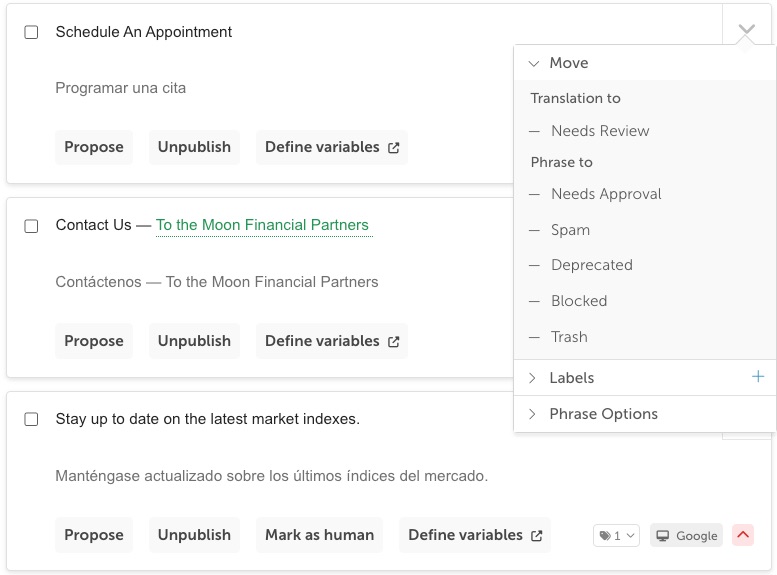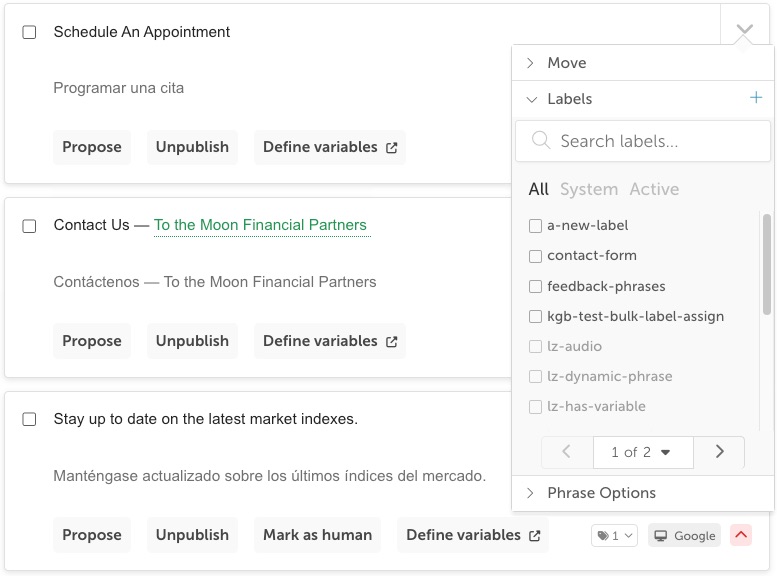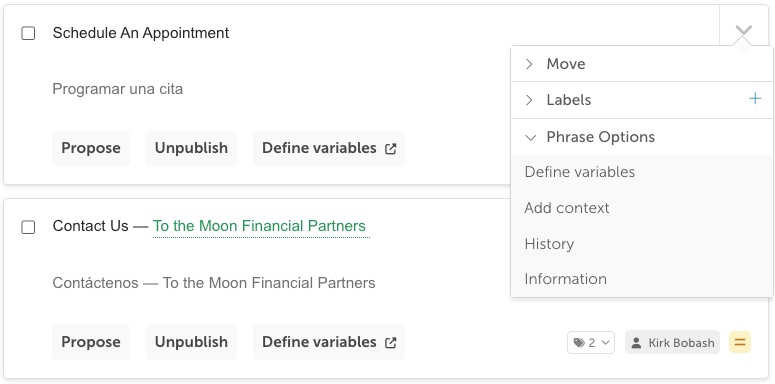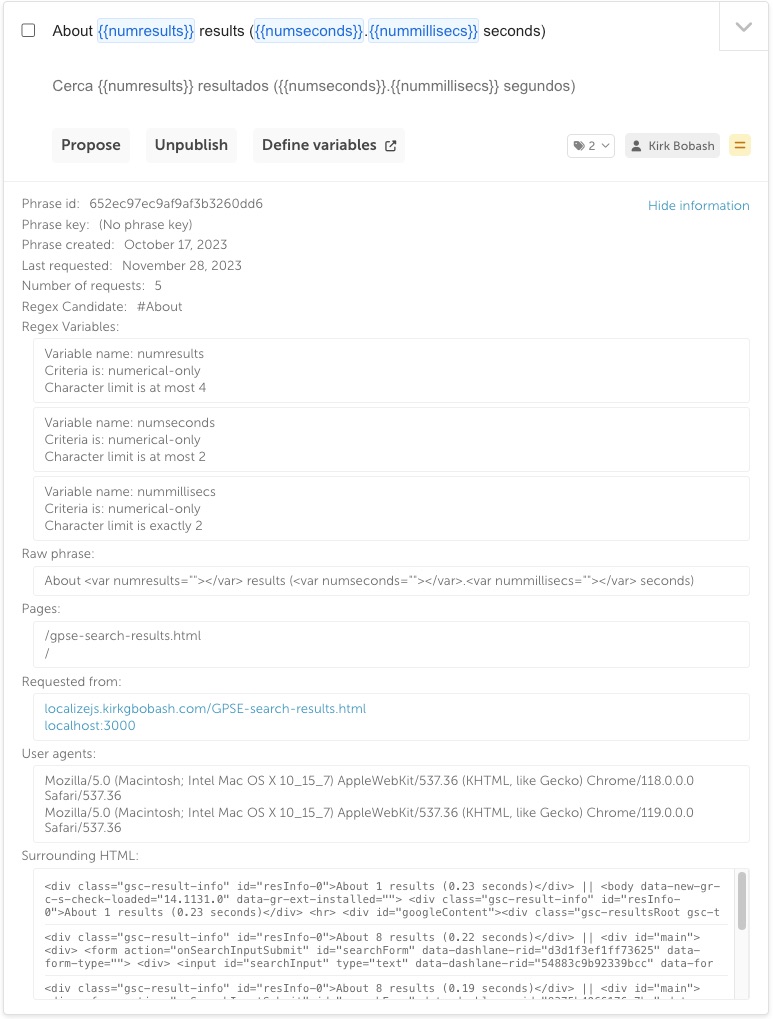Phrase Actions & Info
Phrase Drop-Down Menu
There are many things you can do with a phrase by clicking on the actions drop-down caret in the top/right corner of the phrase panel.
Move

Select the phrases bin to which you would like to move the phrase.
Depending on which bin you are currently in, and whether you have the Translation QA Workflow enabled, your options will vary.
Labels

Add a Custom Label (+)
Click the to add a new label.
After creating a new label, the label will be automatically added to the phrase(s).
Add/remove a Label from a Phrase
Select/deselect the checkbox next to a label to apply/remove that label to/from the phrase.
Search for a Label
Start typing in the search field to find a specific label, or page through your existing labels.
Example Use Cases: Labels
- Add a custom label named "contact-form" to a group of phrases so that your translators know that those phrases are from the Contact Us form on your website.
- Remove the custom label "needs-review" to inform the team that the phrase has been reviewed by a human translator.
Phrase Options

Define Variables
The Define Variables feature makes it easy to identify phrases that contain dynamic content (such as dates, names, email addresses, etc.) so they can be merged into a single phrase for translation - right from within the Localize dashboard!
Read all about this feature here.
Add Context
Click the Add Context link to add helpful context to the phrase. Context is a description of the phrase that can help translators better understand its meaning.
Enter details about the phrase then click Save Context.
Read all about this feature here.

Example Use Cases: Context
- Provide textual context to a phrase so that translators know how the phrase should be translated.
- Add a screen shot to the phrase to provide graphical context to the translators.
- View textual and graphical context for a phrase so that I may translate the phrase properly.
Edit Plurals
If you have any phrases that contain plurals for which you have not yet verified the singular and plural forms, you will see a warning message above the phrases listing. You can click on the Edit plurals option to define the singular and plural forms of the phrase.
History
To view the history of the phrase and its translations, select History from the drop-down.
Read more here about Phrase and Translation history.
Information
Click Information to display details about the phrase.

The information displayed includes (depending on the phrase):
- Phrase ID - an internal ID for the phrase
- Phrase Key (optional) - your custom Phrase Key
- Phrase created - date that the phrase was created
- Last requested - date that the phrase was last requested by a user on your website
- Number of requests - the number of times the phrase was requested by your users
- Regex Candidate - The start of the phrase before the first dynamic variable
- Regex Variables - variable name(s) defined in the phrase, with the specifications for the variable
- Raw phrase - the raw contents of the phrase, including inline HTML elements
- Pages - the pages in your website where the phrase was found (scrollable list)
- Requested from - clickable links of the URLs from where the phrase was requested
- User agents - identifies the application, operating system, vendor, version of the browser that was used when viewing the phrase
- Surrounding HTML - the HTML that is directly around the phrase in the DOM of the page
Example Use Cases: Information
- See what Regex Variables were used and how they were set up with the Define Variables feature, so I may better diagnose why similar phrases are not handled by the Regex settings.
- See the page(s) in the website where the phrase was found, so that I can view the page in the website to see the context for that phrase.
Phrase Action Bar
To enable the Phrase Action Bar select some text in the source language phrase by either double-clicking on a word or clicking and dragging. The Phrase Action Bar will be displayed.

Clicking on one of the icons will do the following:
 Copy
Copy
- Copy the selected text.
 Search
Search
- Search for the selected text.
 Create Glossary Term
Create Glossary Term
- Create a new Glossary Term with the selected text.
- This will open a popup where you can decide whether the term will be a global term or specific to the current project.
 Close
Close
- Close the action bar.
Updated over 1 year ago
